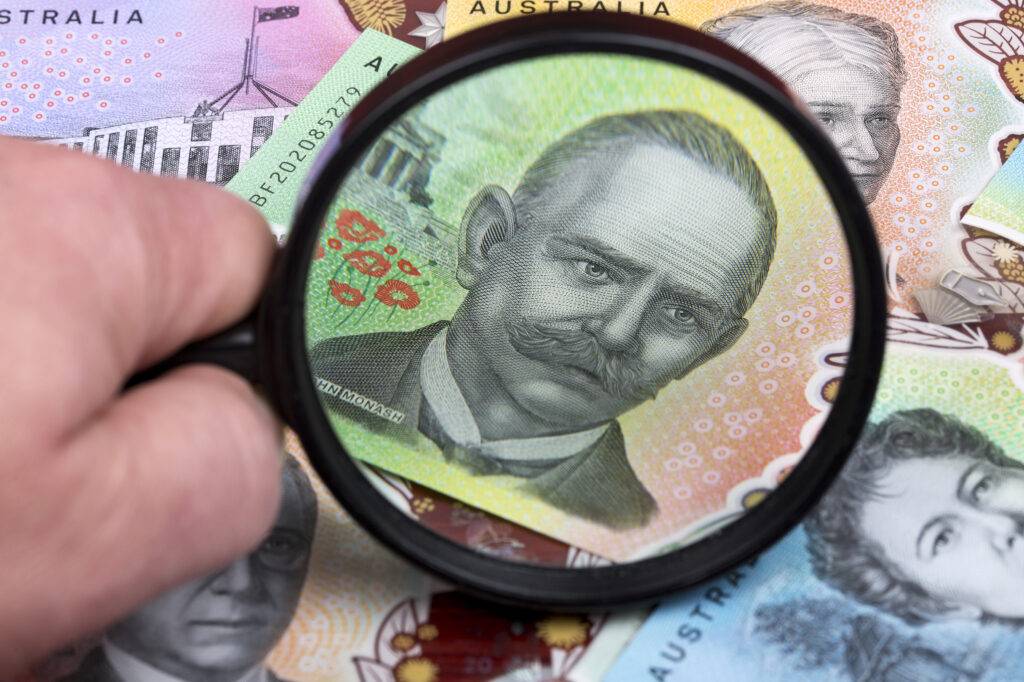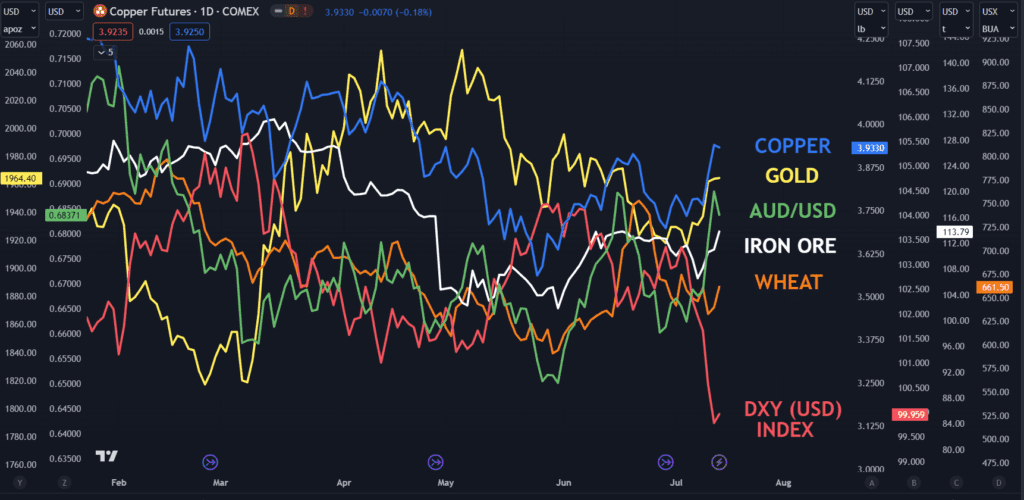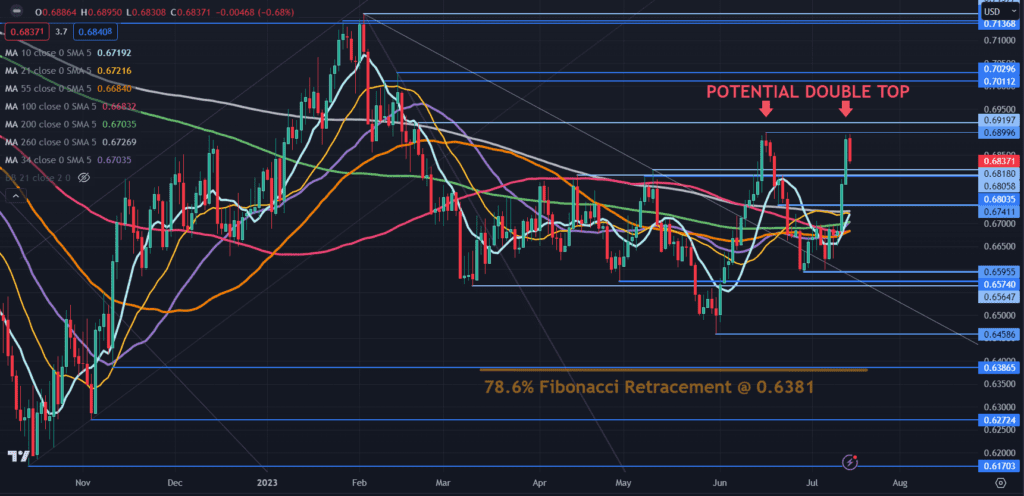Australian Dollar Outlook: AUD Gains Momentum Amidst Weaker US Dollar
Explore the recent surge in the Australian dollar, driven by a weaker US dollar and favorable economic conditions.

The Australian dollar outlook has been characterized by a strong bullish momentum, driven by a weaker US dollar and positive economic conditions. This surge in the value of the Aussie can be attributed to various factors, including the decline of the US dollar against major currencies and the consequent rise in commodity prices. However, as the recent rally approaches its peak, market participants are questioning the possibility of a retreat for the AUD/USD pair. To gain deeper understanding, it is essential to analyze the key drivers that shape the outlook for the Australian dollar.
Monetary Policy, Inflation Readings, and New RBA Governor Shape Australian Dollar Outlook
The 2.26% decline in the US dollar (DXY) index had a significant impact on global markets, with Australia emerging as a major beneficiary. As a major exporter of commodities, Australia experienced a surge in prices for key exports such as iron ore, copper, gold, and wheat. This increase in commodity prices played a crucial role in strengthening the Australian dollar, reflecting the country’s resource-driven economy.
The depreciation of the US dollar led to heightened demand for commodities, particularly iron ore, from China and other trading partners. Additionally, the prices of copper, gold, and wheat also rose, driven by increased demand and market conditions. The surge in commodity prices, coupled with Australia’s robust resource sector, propelled the Australian dollar to higher levels, making it an attractive currency for investors seeking exposure to commodity-driven economies.

Source: dailyFX
Contributing to the US dollar’s decline were softer-than-expected inflation readings, as both the Consumer Price Index (CPI) and the Producer Price Index (PPI) fell below estimates. In June, the headline CPI figures showed a month-on-month reading of 0.2%, slightly lower than the anticipated 0.3%. On a year-on-year basis, it settled at 3.0%, marginally below forecasts of 3.1% and the previous 4.0%. Similarly, core CPI figures also fell short of expectations.
Click here to check the Live AUD/USD Price Chart
The easing of price pressures had a direct impact on Treasury yields, which tumbled across all tenors, particularly in the 2 to 10-year range. These developments have set the stage for central banks, including the Reserve Bank of Australia (RBA), to assess their monetary policy paths.
New RBA Governor and Policy Outlook
The Australian Government’s appointment of Michelle Bullock as the governor of the RBA brings stability to the central bank’s leadership. Bullock, an esteemed central banker, is expected to continue the RBA’s existing monetary policy approach. In a recent speech, she highlighted the need for the unemployment rate to reach 4.5% to effectively control inflation, a level well above the current rate of 3.6%.
While interest rate markets currently assign a low probability of a rate hike during the RBA’s August monetary policy meeting, market analysts anticipate a 25 basis point increase in rates before the end of the year. The upcoming release of quarterly Australian inflation data on July 26th will be a crucial factor influencing the RBA’s monetary policy decisions.
Key Economic Indicators
As market focus shifts to upcoming economic data, attention will be placed on the June unemployment rate in Australia, with expectations for it to remain steady at 3.6%. This data will be closely watched as it has the potential to impact market sentiment and consequently influence the performance of the Australian dollar. A surprising deviation from the expected unemployment rate could either boost the currency if it is lower than anticipated or temporarily weaken it if it is higher.
Additionally, the AUD/USD pair is vulnerable to developments in China’s stimulus policy. As China is a major trading partner for Australia, any announcements regarding stimulus measures from Beijing, along with the release of closely monitored GDP figures, could introduce volatility into the market. Positive economic indicators and growth in China would likely support the Australian dollar by signaling increased demand for Australian exports. Conversely, any signs of economic weakness in China could weigh on the Australian dollar, dampening expectations for trade and economic activity between the two countries. Traders and investors must carefully monitor these factors to navigate the potential impact on the AUD/USD pair.
Technical Analysis and Outlook
Examining the AUD/USD chart, we can observe that the currency pair has been trading within a five-month range of 0.6459 to 0.6900. Despite failing to break the upper bound on Friday, the formation of a potential Double Top pattern raises concerns of a bearish reversal. To invalidate this pattern, a break above 0.6920 is required. However, as long as the pair remains below this level, the potential for a bearish movement remains.

Source: dailyFX
Resistance levels to watch include 0.6900, 0.6920, and the 0.7010 to 0.7030 zone, which has previously acted as a significant resistance area. On the downside, support levels might be found at 0.6818, 0.6806, 0.6803, and 0.6741, with the previous low of 0.6595 serving as a critical support level.
Conclusion
The Australian dollar’s recent bullish momentum, fueled by a weaker US dollar and rising commodity prices, has positioned it for further potential gains. However, uncertainties surrounding the retreat of the AUD/USD pair persist. Factors such as inflation readings, the RBA’s monetary policy decisions under the new governorship, and external events like China’s stimulus policy will continue to shape the Australian dollar’s outlook.
Traders and investors need to closely monitor these developments to navigate the evolving landscape of the Australian dollar. As market dynamics unfold, the interplay between monetary policy, economic indicators, and global factors will be crucial in determining the Australian dollar’s future performance against the US dollar.
Click here to read our latest article on Indian Rupee Falters in Face of Corporate Dollar Demand







